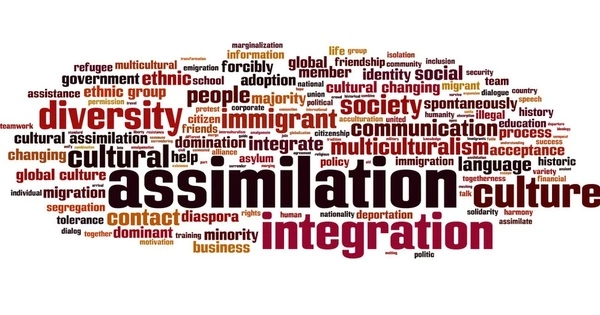Cultural assimilation is the process by which a minority group or culture develops to resemble a society’s majority group or fully or partially assimilates the values, habits, and beliefs of another group. It is the process by which individuals or groups from one culture acquire the practices, beliefs, values, and behaviors of another. This can happen due to a multitude of factors, such as immigration, colonization, globalization, or simply being exposed to a foreign culture over time. Cultural integration can be voluntary or involuntary, and it can have serious social, psychological, and economic consequences.
Full assimilation and forced assimilation are two types of cultural integration. Full absorption is the more common of the two because it occurs naturally. Assimilationism, as a political theory, refers to government practices that intentionally integrate ethnic groups into national culture.
Minority groups are expected to conform to the everyday practices of the majority culture through language and appearance, as well as more significant socioeconomic variables such as absorption into the local cultural and job community, during cultural assimilation.
Here are some key aspects of cultural assimilation:
- Immigration and Migration: When people from one culture relocate to a different country or region, they frequently go through a process of cultural assimilation as they adjust to the rules and customs of their new environment. Learning the language, adopting new customs, and accepting the ideals of the host culture are all examples of this.
- Language Acquisition: Language is one of the most important factors of cultural integration. Learning the dominant culture’s language is frequently required for individuals to fully engage in that culture’s social, economic, and political life.
- Cultural Identity: Cultural assimilation can result in changes to an individual’s cultural identity. They may begin to identify more with the culture they are assimilating into, which can lead to a sense of belonging but also a loss of connection to their original cultural heritage.
- Cultural Exchange: Cultural assimilation is not a one-way process. It often involves a mutual exchange of ideas, practices, and values between the host culture and the incoming culture. This exchange can lead to the development of a unique hybrid culture.
- Acculturation: Acculturation is a related concept to cultural assimilation. It refers to the process of two or more cultures coming into contact and influencing each other while maintaining some degree of distinctiveness. Acculturation can result in cultural assimilation to varying degrees, depending on the power dynamics and the choices made by individuals and groups involved.
Challenges and Adaptation
Cultural assimilation can be a difficult and complicated process. When attempting to adapt to a foreign culture, individuals and groups may suffer discrimination, prejudice, and cultural conflicts. Assimilation, on the other side, may result in personal growth, improved possibilities, and a broader perspective.
Government policies and programs can have an impact on a society’s level of cultural integration. Policies that support multiculturalism, for example, prioritize the preservation of cultural diversity, whereas assimilationist policies encourage newcomers to adopt the prevailing culture.
In order to maintain their cultural heritage, certain individuals and groups may reject assimilation initiatives. They may participate in cultural preservation activities such as the preservation of traditional practices, languages, and customs.
















